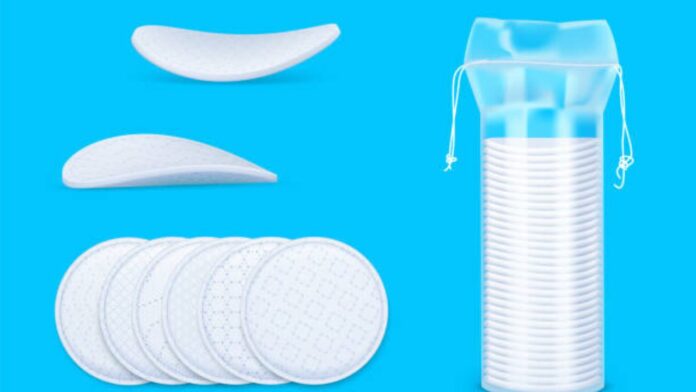Introduction: Making the Switch to Reusable Breast Pads
Breastfeeding is a beautiful, natural process, but it can also be accompanied by various challenges, such as leaks and discomfort. Traditional disposable breast pads have long been the go-to solution for nursing mums, but a growing awareness of environmental concerns and the desire for more comfortable options has led to the rise of reusable breast pads. In this article, we’ll discuss the benefits of using reusable breast pads, what to look for when choosing a brand, and how to properly care for them, helping you make an informed decision for both your comfort and the environment.
Material Matters: What to Look for in Reusable Breast Pads
When selecting reusable breast pads, it’s essential to consider the materials used, as they will directly impact the comfort and effectiveness of the pads. The ideal reusable breast pad should be made of soft, absorbent materials, such as organic cotton, bamboo, or hemp, which are gentle on sensitive skin and can effectively absorb leaks. In addition, the pad should have a waterproof layer made from breathable material, like PUL (polyurethane laminate), to prevent leaks from seeping through to your clothes. Finally, look for pads with a contoured or adjustable fit to ensure they stay in place and provide optimal comfort.
Caring for Your Reusable Breast Pads: Cleaning and Maintenance Tips
Proper care and maintenance of your reusable breast pads will ensure their longevity and effectiveness. Follow these simple steps for optimal results:
- Wash before first use: This removes any residues and enhances the pad’s absorbency.
- Change pads regularly: To maintain hygiene and prevent skin irritation, replace the pads as needed, usually when they become damp.
- Machine wash and dry: Most reusable breast pads are machine washable and dryer safe. Use a gentle cycle and mild, fragrance-free detergent to avoid irritating your skin or your baby’s.
- Store in a mesh bag: Using a mesh laundry bag can help keep your breast pads together during washing and prevent them from getting lost or damaged.
The Environmental and Economic Benefits of Choosing Reusable
Switching to reusable breast pads not only provides a more comfortable solution for nursing mums but also has significant environmental and economic benefits. By choosing reusable pads, you’ll be reducing the amount of single-use plastics and waste that ends up in landfills, contributing to a greener future. In addition, reusable pads can be more cost-effective in the long run, as you’ll save money by not constantly purchasing disposable options.
Testimonials: Real Mums Share Their Reusable Breast Pad Experiences
Many mothers have found that making the switch to reusable breast pads has greatly improved their breastfeeding experience. They cite increased comfort, a better fit, and the satisfaction of knowing they’re making an environmentally conscious choice. Additionally, many mums appreciate the long-term cost savings associated with reusable pads and find that the initial investment pays off over time.
Frequently Asked Questions About Reusable Breast Pads
To help you make a more informed decision about using reusable breast pads, we’ve compiled a list of frequently asked questions and their answers.
The number of reusable breast pads you’ll need depends on factors like the frequency of leaks and how often you’ll be washing them. Generally, it’s recommended to have at least 6-8 pairs (12-16 individual pads) on hand to ensure you always have a fresh set available.
Yes, reusable breast pads are suitable for nighttime use. Many brands offer nighttime or extra-absorbent pads specifically designed for extended wear, providing added leak protection during the night.
With proper care and maintenance, reusable breast pads can last several months to a year. However, replace them if you notice any signs of wear, such as reduced absorbency, fraying edges, or a compromised waterproof layer.
Most reusable breast pads are made from hypoallergenic, organic, and natural materials, making them a safe choice for sensitive skin. To minimise irritation, choose pads made from soft, breathable materials like organic cotton, bamboo, or hemp, and avoid pads with synthetic fabrics or strong fragrances.
Final Thoughts: Embracing a Greener, More Comfortable Solution
As our awareness of environmental impacts and the need for sustainable living grows, it’s essential to consider eco-friendly options in every aspect of our lives, including breastfeeding. Reusable breast pads offer a comfortable, efficient, and environmentally responsible alternative to traditional disposable pads. By choosing reusable options, you’ll be contributing to a greener future while enjoying increased comfort and cost savings. With a variety of brands and materials to choose from, finding the perfect reusable breast pad to suit your needs is easier than ever. Embrace this sustainable solution and experience the benefits for yourself, your baby, and the planet.









